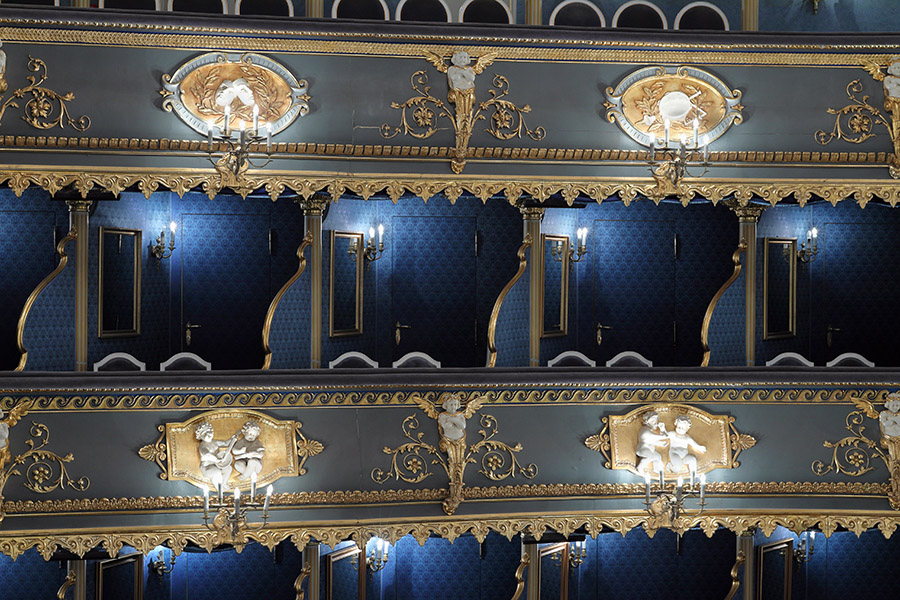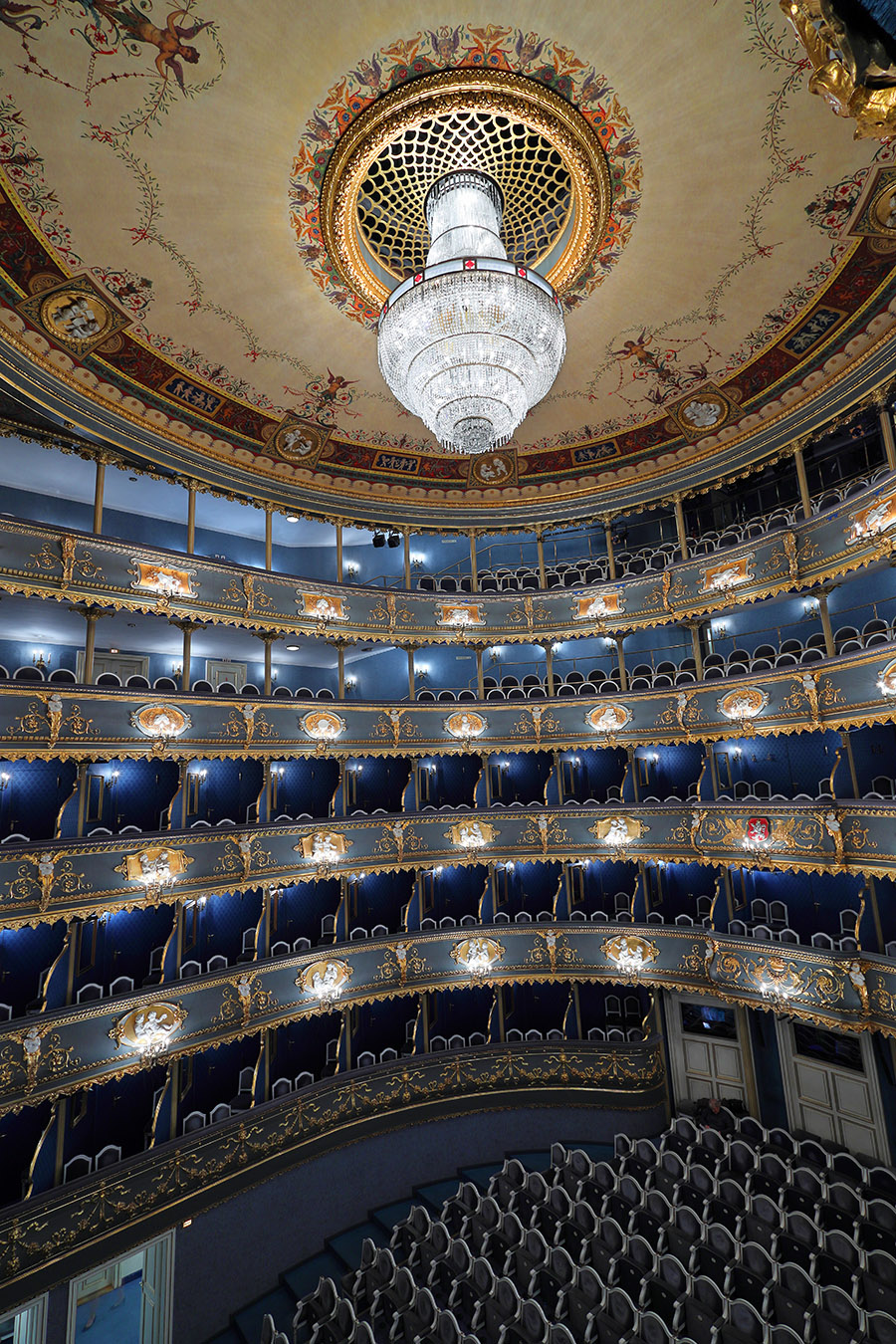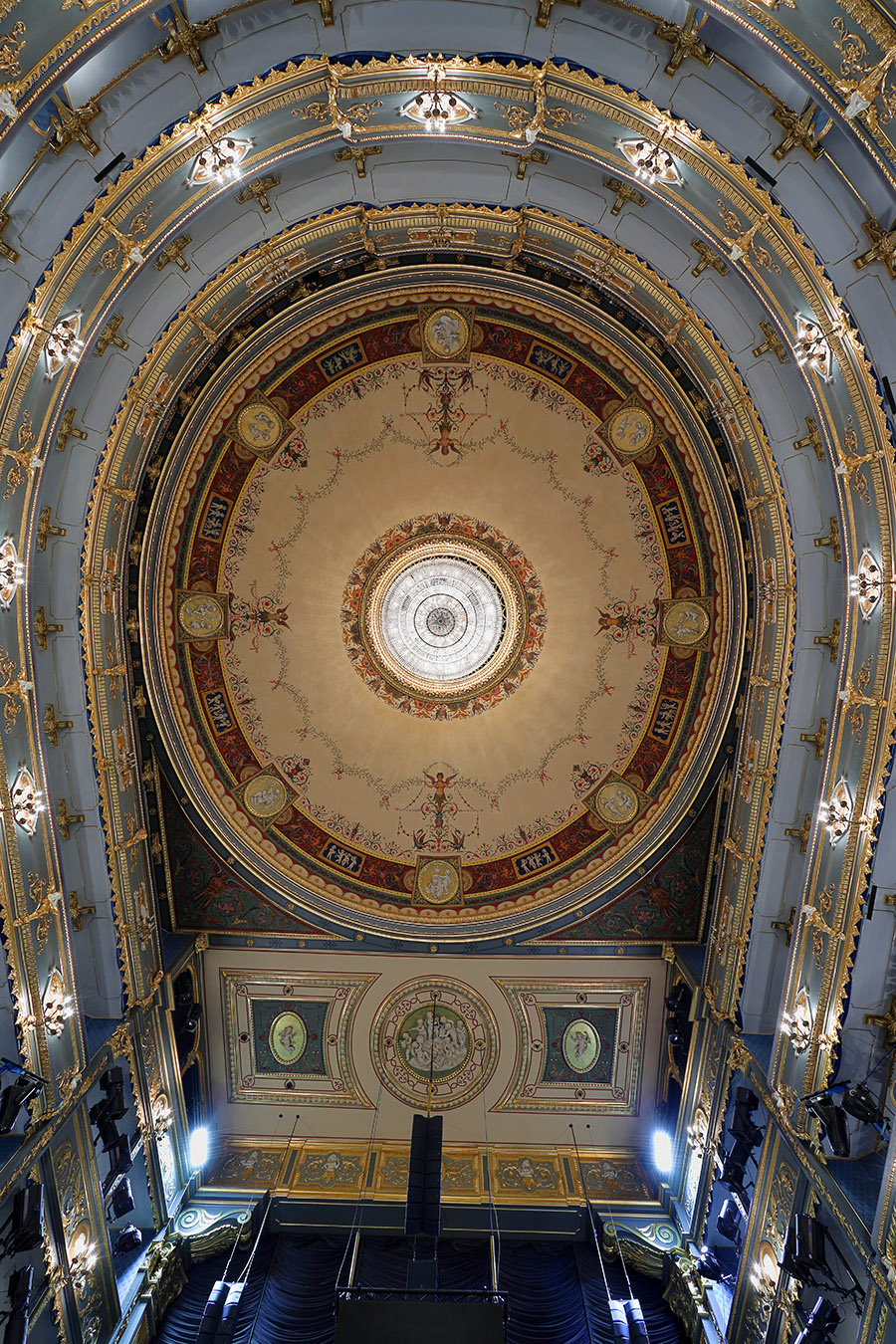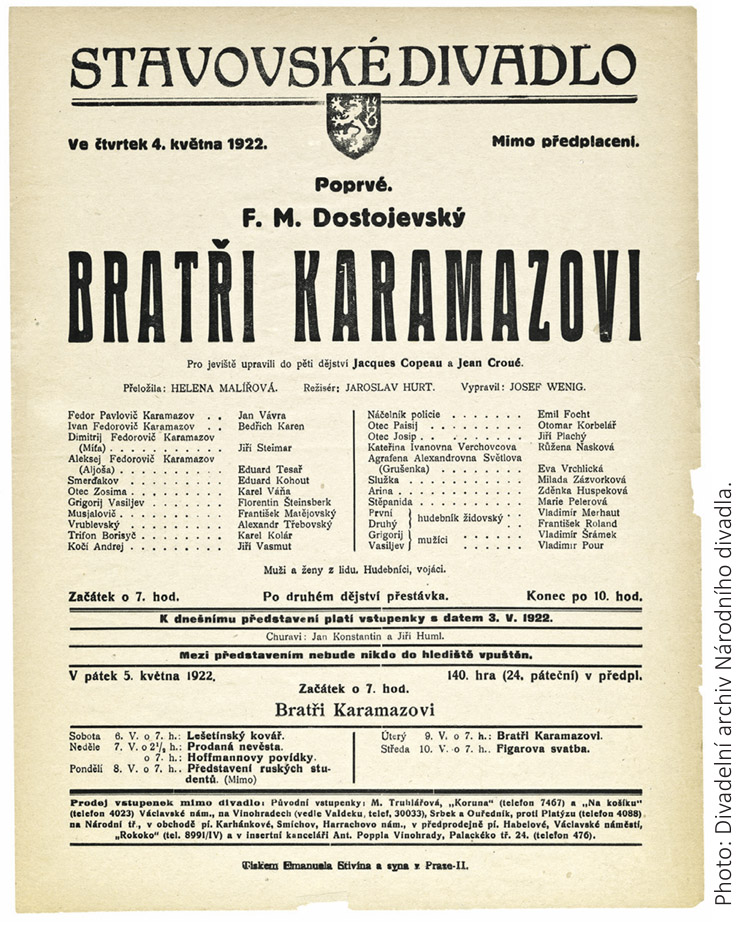THE ESTATES THEATRE. CZECH AND GERMAN LANGUAGES COMPETED IN THE STRUGGLE FOR THE AUDIENCE
The date of 20 January 1785 was a milestone in the history of Czech theatre, as it was on this day that the Count Nostitz Theatre began to perform plays in Czech, the first being Johann Gottlieb Stephanie the Younger's comedy The Fugitive from Son's Love.
The newspapers wrote: «The attendance at the Czech performances was so great that the theatre could not accommodate all those who wished to attend». The Prague edition of The Free Word in 1965 wrote on page 118: «When the actor Höpfler, who played the title role in the first Czech play, thanked the audience in German from the stage after the play, people shouted from all sides of the theatre: «In Czech!», which he then did to the audience's unceasing applause».
There were seven more performances in Czech, but the opposition of the Czech nobility was so strong that the «Czech season» ended in July 1785, and for the next seven years only German and Italian were spoken from the stage of the theatre.
The building of the Estates Theatre in Prague is the oldest theatre building in the city. From its opening on 21 April 1783 until 1798 it was called the National Theatre of Count Nostitz.
The motto «To the Homeland and the Muses» is clearly visible on the façade of the building, reflecting Count Nostitz's intentions: he wanted to build a theatre for the homeland, while the Muses were to be the primary performers of German drama and Italian opera in the theatre.
The State Theatre is famous for being the only theatre where Mozart performed that has survived in its original state. To the left of the main entrance to the State Theatre is a ghostly statue of the Commandant from Mozart's opera Don Giovanni. IL Commendatore is one of the most famous creations of the Czech artist Anna Chromy, known as the Empty Cloak, Cloak of Conscience, Pieta, Commander.

In 1798, the theatre was purchased by representatives of the estates of the Czech royal family, after which it was renamed the Royal Estates Theatre, also known as the Estates Theatre of the Old Town of Prague. Gradually, from the autumn of 1804, the theatre resumed performances in the Czech language.
On 2 February 1826, the State Theatre successfully staged the first Czech opera, The Tinker, by the Czech composer František Škroup, who later wrote the music for Josef Kajetán Tyl's comedy «Fidlovačka aneb Žádný hněv a žádná rvačka» (Fidlovačka or No Anger and No Fight).
On the day of its premiere, 21 December 1834, the famous song «Where is my homeland?», which later became the Czech national anthem, was performed for the first time at the Prague State Theatre.
Since 1848, the Czech stage had been in gradual decline, and the inevitable happened: on 16 November 1862, the last performance in Czech was given in the State Theatre. For the next almost 60 years, only German could be heard on the stage of the theatre, which was renamed the Royal Provincial German Theatre in 1862.
According to information in the book «230 Years of the State Theatre», published by the Institute of Arts in 2013, after the Prussian-Austrian War in 1866, people from German towns began to move to Prague. They established their businesses and branches here.
With the proclamation of the German Empire on 18 January 1871, the flow of Germans to Bohemia increased. German Prague changed in every respect. The new conditions were immediately reflected in the Estates Theatre, where the old German Praguers immediately lost their positions.
In the autumn of 1920, the drama in relations between Czech society and the German minority reached its apogee: on 16 November 1920, Czech demonstrators, together with Russian legionnaires, occupied the building of the Estates Theatre. The German side reacted sharply to this «arbitrariness» and there were calls for support of the German stage. The response to these 'high demands' was a decree that the Estates Theatre be handed over to the National Theatre and renamed the Estates Theatre. In almost 20 years, the Estates Theatre staged an incredible number (62!) of premieres by Czech authors, including Karel Čapek's plays The White Disease and The Mother.
In 1939, the Estates Theatre again became a German theatre, performing only German productions, and on 1 September 1944, all theatrical activity was completely suspended throughout the Czech lands.

The Estates Theatre resumed its work on 17 July 1945 with a production of The Lantern by Czech writer Alois Jirásek. In 1948 it was renamed the Tyla Theatre (after Josef Tyl, Czech playwright and author of the text of the Czech national anthem). From 1983 and for the next eight years, the theatre building was closed for extensive renovation.
On 3 December 1991, the theatre reopened its doors to the public with the opera Don Giovanni. A year earlier, during the reconstruction, the theatre had been given back its original name - the State Theatre.
During the 1983-1991 reconstruction, the colour scheme of the theatre's interior was radically changed from the classic white-golden-red to white-golden-blue. Why was this done? Theatre-goers often say that there was a lot of red in those days, so the choice was golden-blue.
It is important to note that the ceiling of the theatre has been repainted several times. In 1844 it was painted by Antonin Wild, two years later again and in 1874 by Karel Nácovsky. In the course of the restoration, experts were able to uncover the oldest painting by gradually removing layers of paint.

Before the reconstruction of the theatre, the huge chandelier on the ceiling was in such a bad condition that it could not be saved. For this reason, a new chandelier with crystal pendants was made, and its current appearance is completely identical to the original.
As well as numerous dramas and comedies, the theatre also stages operas, mostly by Mozart.
Russian classics have been premiered at the State Theatre: Anton Pavlovich Chekhov's plays: The Cherry Orchard - 16 September 1951, Three Sisters - 7 November 1955; Fyodor Mikhailovich Dostoevsky's The Brothers Karamazov - 4 May 1922; Nikolai Vasilyevich Gogol's comedies: The Marriage - 10 November 1945 and The Inspector - 13 June 1958.

Text and photos: Boris Kogut









